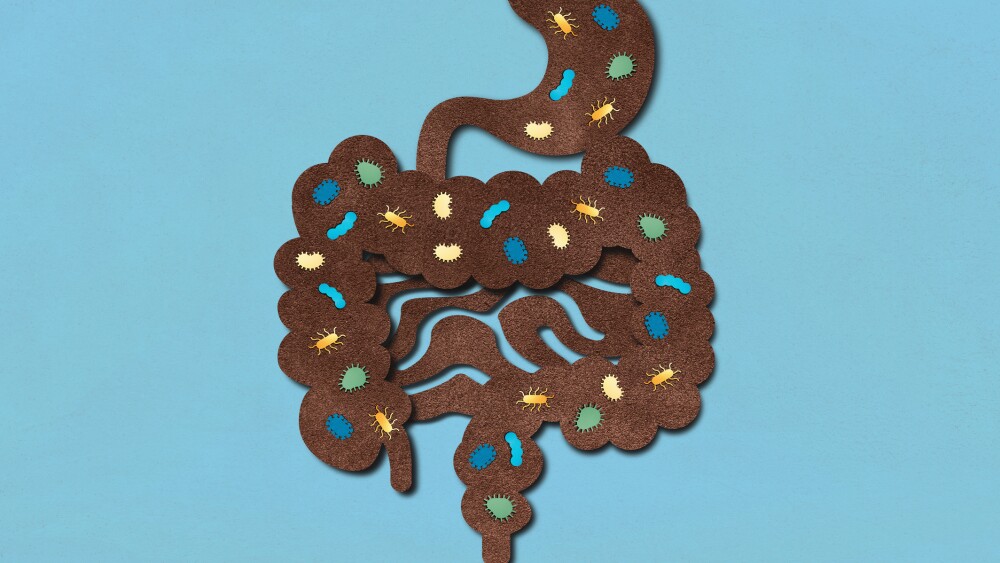One oral presentation and nine posters will shed light on real-world experiences of people living with XLH and the impact of burosumab treatment
TOKYO, Sept. 19, 2024 /PRNewswire/ -- Kyowa Kirin Co., Ltd. (Kyowa Kirin, TSE:4151) will share new research that enhances understanding about the use of burosumab in real-world clinical practice as well as the burden of those living with X-linked hypophosphatemia (XLH), a rare genetic metabolic bone disease. The findings will be presented at the American Society for Bone and Mineral Research (ASBMR) 2024 annual meeting, which takes place September 27-30 in Toronto.
The oral presentation of “Patient reported outcomes (PRO) from a real-world study of burosumab treatment in adults with X-linked hypophosphatemia in the UK” will be made by Judith Bubbear, MD, Royal National Orthopaedic Hospital (UK) on Saturday, September 28, 11:30 am EDT (Presentation #1022).
“As we learn more about XLH and how it impacts people’s lives, real-world evidence can provide much-needed insight into potential strategies for managing this debilitating disease,” said Angela Williams, PhD, Vice President and Global Head of Health Economics and Outcomes Research at Kyowa Kirin. “The breadth of our ASBMR data reflects our continued focus on advancing the science and understanding of XLH and improving the lives of people living with XLH.”
ASBMR XLH poster presentations:
Real-world impact of burosumab treatment in people living with XLH:
“Effectiveness of burosumab versus conventional therapy in adults with X-linked hypophosphatemia in a real-world setting from the XLH Disease Monitoring Program” (Poster#SAT-430)
Lead author: Pablo Florenzano, MD, Pontificia Universidad Católica de Chile
- Poster Session I: Saturday, September 28, 2:15 – 3:45 pm EDT
“Biochemical measurements according to age group in burosumab-treated patients with X-linked hypophosphatemia (XLH) in a real-world setting: an analysis of the XLH Disease Monitoring Program” (Poster #Fri-424, #Sun-424)
Lead author: Leanne M. Ward, MD, Children’s Hospital of Eastern Ontario
Welcome Reception/Plenary Poster Session: Friday, Sept. 27, 5:30 – 7:30 pm EDT
- Poster Session II; Sunday, Sept. 29, 2:15 – 3:45 pm EDT
“Symptoms experienced by adolescents living with X-linked hypophosphatemia at the end of skeletal growth (EOSG) treated with burosumab—a mixed methods analysis” (Poster #SAT-445)
Lead author: Vrinda Saraff, MD, Birmingham Women’s and Children’s Hospital (UK)
- Poster Session I: Saturday, Sept. 28, 2:15 – 3:45 pm EDT
“Efficacy and safety of burosumab in adult Chinese patients with X-linked hypophosphatemic rickets/osteomalacia (XLH): an open-label, multi-center, single-cohort, post-marketing phase IV study” (Poster#SUN-119)
Lead author: Wei Liu, MD, Peking Union Medical College Hospital
- Poster Session II: Sunday, Sept. 29, 2:15 – 3:45 pm EDT
“Efficacy and safety of burosumab in pediatric Chinese patients with X-linked hypophosphatemic rickets/osteomalacia (XLH): an open-label, multi-center, single-cohort, post-marketing phase IV study” (Poster#SAT-121)
Lead author: Xiaoping Luo, MD, Tongji Medical College, Huazhong University of Science and Technology
- Poster Session I: Saturday, Sept. 28, 2:15 – 3:45 pm EDT
XLH burden on multiple aspects of patients’ lives:
“Association between pain medication use and patient-reported outcomes in adults with X-linked hypophosphatemia: an exploratory analysis of a phase 3 study” (Poster #Sat-025)
Lead author: Angela Williams, PhD, Kyowa Kirin International
- Poster Session I: Saturday, Sept. 28, 2:15 – 3:45 pm EDT
“Individuals with hereditary hypophosphatemia are not prone to early death despite significant earlier development of co-morbidities: a retrospective Danish register study” (Poster #Sun-024)
Lead author: Signe Sparre Beck-Nielsen, MD, PhD, Aarhus University Hospital (Denmark)
- Poster Session II: Sunday, Sept. 29, 2:15 – 3:45 pm EDT
“X-linked Hypophosphatemia Community Impact Survey: psychosocial health, symptoms, and self-care” (Poster #SAT-LB 543)
Lead author: Jill Simmons, MD, Vanderbilt University Medical Center
- Late Breaking Poster Session I: Saturday, Sept. 28, 2:15 – 3:45 pm EDT
Bridging evidence gaps to improve clinical decision-making in XLH:
“Advancing Patient Evidence in XLH (APEX): rational and design of real-world XLH global data unification program” (Poster #SAT-427)
Lead author: Maria Luisa Brandi, MD, PhD, FIRMO Foundation, Florence, Italy and the University Vita-Salute San Raffaele, Milan, Italy
- Poster Session I: Saturday, Sep 28, 2:15-3:45 pm EDT
About X-linked hypophosphatemia
X-linked hypophosphatemia is a rare, lifelong, genetic disease that can impact the bones and muscles in both children and adults. In individuals with XLH, the body doesn’t hold on to enough phosphorus, which is an essential mineral for bone health. This is due to the production of excess fibroblast growth factor 23 (FGF23), causing the body to release too much phosphorus through the urine. When phosphorus levels are too low (hypophosphatemia), it can cause the softening and weakening of growing bones in children (rickets) and of mature bones in adults (osteomalacia).
In children, XLH typically appears as bowed legs or knock knees. Over time, bone weakening can also lead to bone abnormalities in the legs, delayed growth, and short stature. In adults, XLH may cause osteomalacia, fractures and pseudo-fractures, and hypophosphatemia.
About CRYSVITA® (burosumab-twza) Injection
CRYSVITA is a recombinant fully human monoclonal IgG1 antibody, discovered by Kyowa Kirin, which binds to and inhibits the biological activity of FGF23, the underlying cause of hypophosphatemia in XLH. By blocking FGF23, CRYSVITA helps to restore phosphorus reabsorption in the kidneys and increase the production of active vitamin D, which enhances intestinal absorption of phosphate and calcium.
U.S. CRYSVITA Indication
CRYSVITA is a fibroblast growth factor (FGF23) blocking antibody indicated for the treatment of X-linked hypophosphatemia (XLH) in adult and pediatric patients 6 months of age and older.
Important Safety Information
CONTRAINDICATIONS
CRYSVITA is contraindicated:
In concomitant use with oral phosphate and/or active vitamin D analogs (e.g., calcitriol, paricalcitol, doxercalciferol, calcifediol) due to the risk of hyperphosphatemia.
When serum phosphorus is within or above the normal range for age.
In patients with severe renal impairment or end stage renal disease because these conditions are associated with abnormal mineral metabolism.
WARNINGS AND PRECAUTIONS
Hypersensitivity
- Hypersensitivity reactions (e.g., rash, urticaria) have been reported in patients with CRYSVITA. Discontinue CRYSVITA if serious hypersensitivity reactions occur and initiate appropriate medical treatment.
Hyperphosphatemia and Risk of Nephrocalcinosis
- Increases in serum phosphorus to above the upper limit of normal may be associated with an increased risk of nephrocalcinosis. For patients already taking CRYSVITA, dose interruption and/or dose reduction may be required based on a patient’s serum phosphorus levels.
Injection Site Reactions
- Administration of CRYSVITA may result in local injection site reactions. Discontinue CRYSVITA if severe injection site reactions occur and administer appropriate medical treatment.
ADVERSE REACTIONS
Pediatric Patients
Adverse reactions reported in 10% or more of CRYSVITA-treated pediatric XLH patients across three studies are: pyrexia (55%, 44%, and 62%), injection site reaction (52%, 67%, and 23%), cough (52%), vomiting (41%, 48%, and 46%), pain in extremity (38%, 46%, and 23%), headache (34% and 73%), tooth abscess (34%, 15%, and 23%), dental caries (31%), diarrhea (24%), vitamin D decreased (24%, 37%, and 15%), toothache (23% and 15%), constipation (17%), myalgia (17%), rash (14% and 27%), dizziness (15%), and nausea (10%).
- Postmarketing experience reported in CRYSVITA-treated pediatric XLH patients: blood phosphorus increased.
Adult Patients
Adverse reactions reported in more than 5% of CRYSVITA-treated adult XLH patients and in at least 2 patients more than placebo in one study are: back pain (15%), headache (13%), tooth infection (13%), restless legs syndrome (12%), vitamin D decreased (12%), dizziness (10%), constipation (9%), muscle spasms (7%), and blood phosphorus increased (6%).
- Spinal stenosis is prevalent in adults with XLH, and spinal cord compression has been reported. It is unknown if CRYSVITA therapy exacerbates spinal stenosis or spinal cord compression.
USE IN SPECIFIC POPULATIONS
There are no available data on CRYSVITA use in pregnant women to inform a drug-associated risk of adverse developmental outcomes. Serum phosphorus levels should be monitored throughout pregnancy. Report pregnancies to the Kyowa Kirin, Inc. Adverse Event reporting line at 1-844-768-3544.
- There is no information regarding the presence of CRYSVITA in human milk or the effects of CRYSVITA on milk production or the breastfed infant. Therefore, the developmental and health benefits of breastfeeding should be considered along with the mother’s clinical need for CRYSVITA and any potential adverse effects on the breastfed infant from CRYSVITA or from the underlying maternal condition.
PATIENT COUNSELING INFORMATION
Advise patients not to use any oral phosphate and/or active vitamin D analog products.
- Instruct patients to contact their physician if hypersensitivity reactions, injection site reactions, and restless legs syndrome induction or worsening of symptoms occur.
You may report side effects to the FDA at (800) FDA-1088 or www.fda.gov/medwatch. You may also report side effects to Kyowa Kirin, Inc. at 1-844-768-3544. For important risk and use information, please see the full Prescribing Information for CRYSVITA.
About Kyowa Kirin
Kyowa Kirin aims to discover and deliver novel medicines and treatments with life-changing value. As a Japan-based Global Specialty Pharmaceutical Company, we have invested in drug discovery and biotechnology innovation for more than 70 years and are currently working to engineer the next generation of antibodies and cell and gene therapies with the potential to help patients with high unmet medical needs, such as bone & mineral, intractable hematological diseases/hemato oncology, and rare diseases. A shared commitment to our values, to sustainable growth, and to making people smile unites us across the globe. Learn more about Kyowa Kirin at: kyowakirin.com.
COR-US-CRY-0049 September 2024
![]() View original content to download multimedia:https://www.prnewswire.com/news-releases/kyowa-kirin-to-present-new-research-spotlighting-global-efforts-to-advance-science-and-patient-care-in-x-linked-hypophosphatemia-at-asbmr-annual-meeting-302253083.html
View original content to download multimedia:https://www.prnewswire.com/news-releases/kyowa-kirin-to-present-new-research-spotlighting-global-efforts-to-advance-science-and-patient-care-in-x-linked-hypophosphatemia-at-asbmr-annual-meeting-302253083.html
SOURCE Kyowa Kirin






